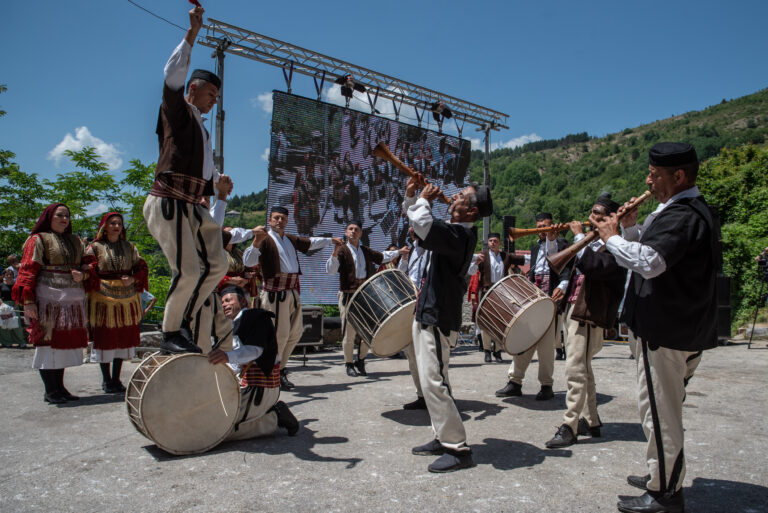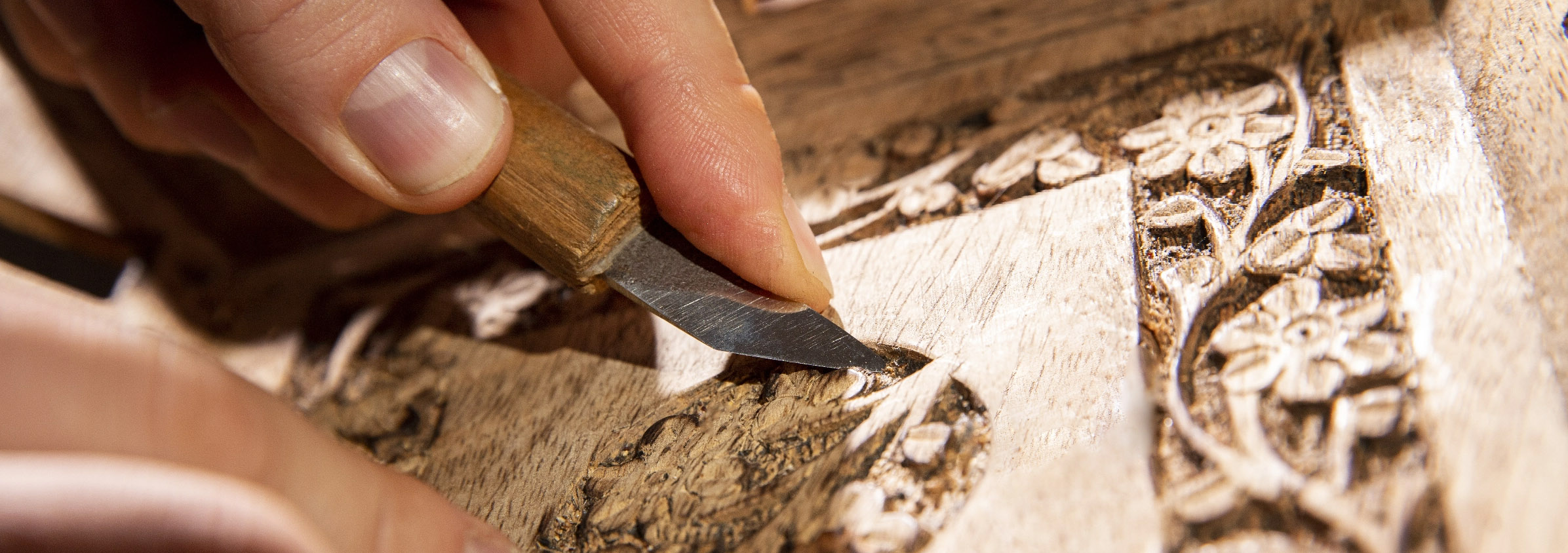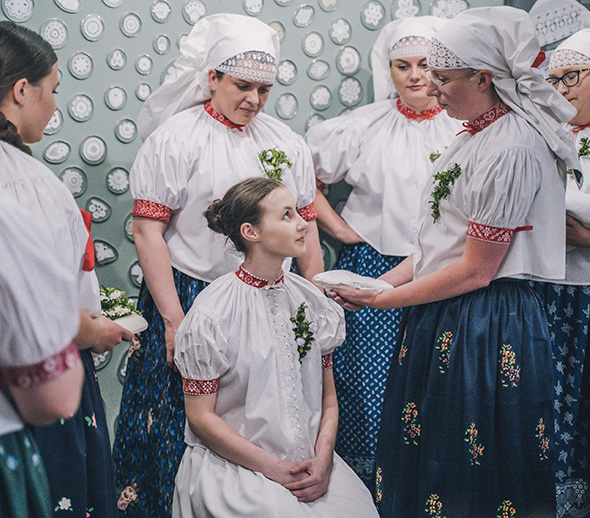
Agenda 2030
The sustainable development work of all the countries of the world is guided by the global action program for sustainable development agreed in 2015 at the UN, called the Agenda 2030. The Agenda is a plan of action for people, planet and prosperity. It contains 17 Sustainable Development Goals that the countries should achieve together by 2030.
The 17 Sustainable Development Goals are the blueprint to achieve a better and more sustainable future for all. They address the global challenges we face. TheGoals are all interconnected, and in order to leave no one behind, it is important that we achieve them all by 2030.
The Decade of Action calls for accelerating sustainable solutions to all the world’s biggest challenges — ranging from poverty and gender to climate change, inequality and closing the finance gap.
Sustainable development is at the core concept of UNESCO (United Nations Educational, Scientific and Cultural Organization) as it thrives to tackle poverty, foster education and protect our natural heritage.
The UNESCO Thematic Indicators for Culture in the 2030 Agenda (UNESCO Culture|2030 Indicators) is a framework of thematic indicators whose purpose is to measure and monitor the progress of culture’s enabling contribution to the national and local implementation of the Goals and Targets of the 2030 Agenda for Sustainable Development.
UNESCO World Conference on Cultural Policies and Sustainable Development – MONDIACULT 2022 was an important milestone. In the Mondiacult Declaration, States affirm for the first time that culture is a “global public good".
Website for the Convention for the Safeguarding of the Intangible Cultural Heritage
Learn more about UNESCO’s work on the Convention for the Safeguarding of the Intangible Cultural Heritage.
Sustainable Development and Living Heritage
The notion of ‘sustainability’ in the 2030 Agenda for Sustainable Development echoes the concept of ‘living heritage’ in the 2003 Convention for the Safeguarding of the Intangible Cultural Heritage.
Sustainable development toolbox
This toolbox explores the relationship between intangible cultural heritage and sustainable development through examples from around the world.
The Blue Book – Operational Directives
Operational Directives for the Implementation of the Convention for the Safeguarding of the Intangible Cultural Heritage gives concrete guidelines on how to recognize the importance and strengthen the role of intangible cultural heritage as a driver and guarantee of sustainable development. See operational directives 170-197.
Dive into Intangible Cultural Heritage
This visualization aims to draw out the interconnections between living heritage and the 17 sustainable development goals (SDGs) the international community set for 2030. It shows that living heritage is not only diverse and colourful, but also an invaluable source of time-tested knowledge about how to live on our planet sustainably and peacefully
The 2003 Convention Research Bibliography provides an interactive bibliography of research references related to the Convention for the Safeguarding of the Intangible Cultural Heritage and its implementation.
Inter-Agency Platform on Culture for Sustainable Development (ICPSD)
The Inter-Agency Platform on Culture for Sustainable Development (IPCSD) was launched by UNESCO in 2021 to foster structured dialogue and cooperation on culture and sustainable development. The Platform was initiated against the background of an increased, uncontested acknowledgment of culture’s systemic impact on sustainable development, both by Member States themselves, and within the international development community at large, including within the UN system.
A platform for communication, networking, exchange and cooperation for NGOs accredited by UNESCO to the Convention for the Safeguarding of Intangible Cultural Heritage. NGOs are a pillar for the safeguarding of the World’s living traditions, together with the holders of these traditions and the States.
Intangible Cultural Heritage and Sustainable Tourism
This web dossier is designed to help to explore benefits and challenges when intangible cultural heritage (ICH) and tourism meet, and to develop sustainable living heritage tourism. The dossier is developed by the ICH NGO Forum.
Heritage Alive
Heritage Alive is a journal series by the ICH NGO Forum. It seeks to share NGOs experiences regarding safeguarding practices, both good and bad, within the area of Intangible Cultural Heritage. It aims to share knowledge from fieldwork in communities and with practitioners, between the UNESCO accredited NGOs and experts, in order to learn from each other. So far the following journals have been published: Storytelling, Traditional musical instruments, Traditional medicine and Traditional food.
Safeguarding practises
Website Safeguarding Practices is all about sharing experiences in safeguarding intangible cultural heritage in the Nordic and Baltic region. Tens of examples from different countries in all domains of living heritage highight also sustainable ways of living and practising heritage.
The Climate Heritage Network seeks to scale up culture-based climate action and to make climate policy people-centred through coordination and cooperation among its members.
The Committee on culture of the world organization of United Cities and Local Governments (UCLG)
UCLG is the global platform of cities, organizations and networks to learn, to cooperate and to launch policies and programmes on the role of culture in sustainable development.
The Committee on Culture of UCLG has created a database of good practices in the area of culture and local sustainable development.
Julie’s Bicycle – Creative Climate Tools
A pioneering non-profit in UK, mobilising the arts and culture to take action on the climate, nature and justice crisis.
Science-based tools and analytics for SDG pathways, policies and financing.
Ellen MacArthur Foundation - The butterfly diagram: visualising the circular economy
Learn more about circular economy, for example in food, fashion and design.
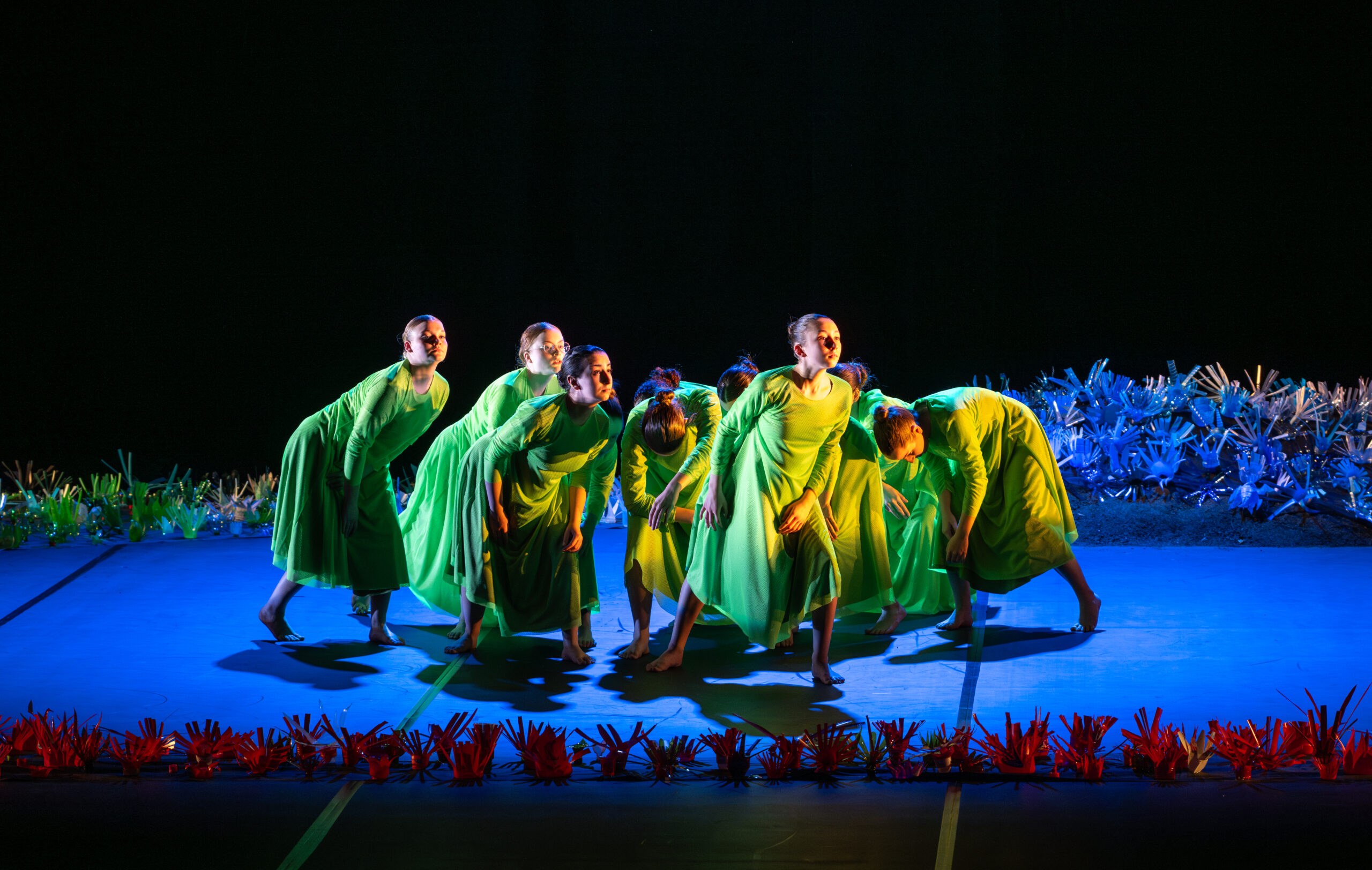
European Commission: Cultural Heritage
Website of the European Commission on safeguarding and enhancing cultural heritage in Europe.
European framework for action on cultural heritage
The Framework for Action promotes and puts into practice an integrated and participatory approach to cultural heritage, and contributes to the mainstreaming of cultural heritage across EU policies. The European Parliament, the Council of the European Union, the Committee of the Regions and the Economic and Social Committee support this approach.
Parliamentary Assembly: Safeguarding and Enhancing ICH in Europe
Council of Europe’s Resolution 2269 (2019) on intangible cultural heritage in Europe.
This report delivers 11 messages for action for and from Europe, each pointing to a specific area of action. Policy recommendations are provided for stakeholders and policymakers.
Participatory governance of cultural heritage
This report is the result of the OMC (Open Method of Coordination) working group of 27 EU Member States' experts to identify innovative approaches to the multilevel governance of tangible, intangible and digital heritage which involve the public sector, private stakeholders and the civil society, in the framework of the Work Plan for Culture 2015-2018.
The New European Bauhaus initiative connects the European Green Deal to our daily lives and living spaces. It calls on all Europeans to imagine and build together a sustainable and inclusive future that is beautiful for our eyes, minds, and souls.
The Green Book for the Sustainable Management of Cultural Heritage was created by the Ministry of Culture in Spain. It is developed as a dynamic document, designed to continuously evolve and to encourage public participation.

Nordic Council of Ministers and Sustainable Development
The Nordic Council of Ministers actively promotes sustainable development in the Region by focusing all of its efforts on twelve objectives linked to a green, competitive and socially sustainable region.
Nordic Green Roadmap for Cultural Institutions
The Nordic Green Roadmap for Cultural Institutions is the outcome of the project: Sustainable Cultural Experiences in the Nordic Region, which is led by The Nordic House in the Faroe Islands as part of the Nordic Council of Ministers’ Sustainable Living programme (2021–24).
NorReg - Nordic Regenerative Tourism
NorReg is a project is funded by the Nordic Council of Ministers, aimed at developing and providing relevant, interesting, and accessible tools for small and micro-sized tourism operators in destinations in the Nordic countries.
Government Resolution for the Cultural Heritage Strategy 2023–2030
Finnish Government's Cultural Heritage Strategy is the fist of its kind. In the strategy, cultural heritage is looked at comprehensively. The starting point is fostering, developing and utilising diverse tangible, intangible and digital cultural heritage and cultural environments as a resource for the whole society. The strategy's vision emphasizes the importance of cultural heritage as a resource for society that offers solutions for building a sustainable future.
The project NORDIC VOICES (2022–2024) seeks to increase the use of oral histories, life narratives and personal memories in Nordic cultural institutions by collaborating with leading experts from both academia and various cultural institutions. In 2023, they hold two webinars.
Report on the Nordic conference on Sámi Intangible Cultural Heritage
The Nordic conference in Norway 2022 and the report about it sheds light to the work of developing common Sámi principles for the management of Sámi intangible cultural heritage (ICH). It intends to raise awareness and recognition of the importance of Sámi ICH among the general public in the Nordic region.
Ecological Guidelines for the Network of the Finnish Cultural and Academic Networks
This set of ecological guidelines has been prepared by the Helsinki-based association The Finnish Cultural and Academic Institutes (SKTI). These guidelines support the seventeen Institutes around the world to make more sustainable decisions, and reduce their carbon footprint.
Swedish Portal for Climate Change Adaptation
Information from Swedish authorities about climate change.
Stockholm Resilience Centre & Planetary Boundaries
Stockholm Resilience Centre's vision is a thriving and resilient biosphere that enables well-being for all. The planetary boundaries concept presents a set of nine planetary boundaries within which humanity can continue to develop and thrive for generations to come.
Creative Denmark is a not-for-profit, public-private partnership that creates awareness about Danish creative strongholds internationally and the potential of Danish creativity in solving global challenges. They have an interesting selection of white papers and case studies on the creative sector and sustainability.
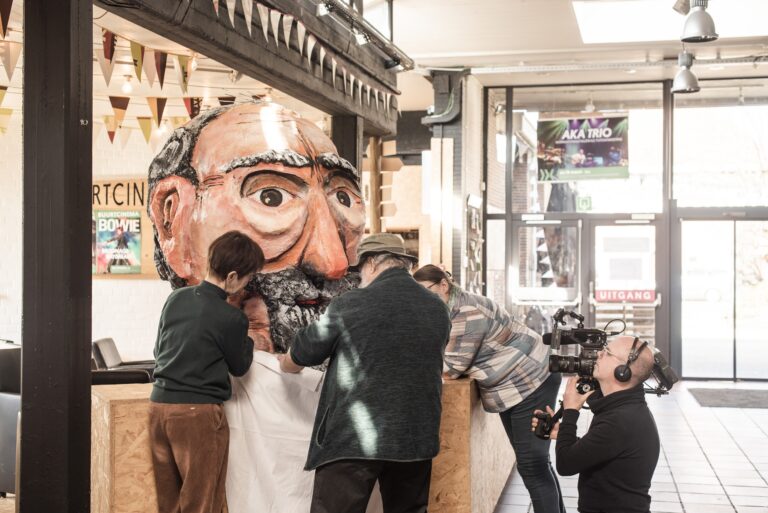
As representative of the global museum community, the vision of the International Council of Museums (ICOM) is a world where the importance of natural and cultural heritage is universally valued. ICOM strives to ensure that sustainability – through all its forms: social, economic and environmental- is included in its mission and values, as well as in specific activities.
ICOM – Intangible Cultural Heritage
The ICOM definition of a museum recognises the role of museums in the preservation and protection of both the tangible and intangible heritage of humanity. Museums can contribute significantly to the safeguarding of intangible heritage, using their mandate, infrastructures and resources to develop creative initiatives about its preservation.
Network of European Museum Organisations
NEMO encourages and supports museums to do their part and actively contribute to a more sustainable future.
The Intangible Cultural Heritage and Museums Project
The Intangible Cultural Heritage and Museums Project (IMP) explored the variety of approaches, interactions and practices on intangible cultural heritage in museums in Belgium, The Netherlands, Switzerland, Italy and France.
A guide for museums to help understand the sustainable development goals and Agenda2030, made by Curating Tomorrow, a consultancy for museums.
Museum and the Sustainable Development Goals
'Museums and the Sustainable Development Goals: a how-to guide for museums, galleries, the cultural sector and their partners' was produced in 2019 to help museums and their partners to enhance their contributions to sustainable development, using the SDGs as a template. See also other useful tools by the Museums and Climate Change Network (MCCN).
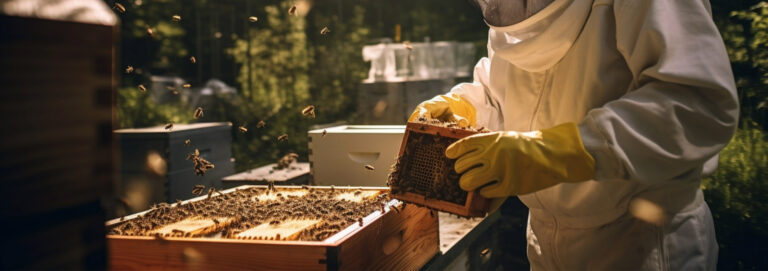
Project HIPAMS & HIPAMS Toolkit
HIPAMS, Heritage Sensitive Intellectual Property and Marketing Strategies was a multinational project that created also the HIPAMS toolkit. The kit aims to help communities who want to promote their heritage products and services in the market. It will be most helpful to those who have already entered the market and wish to refine their approach. It offers some ideas that can be used to maximise benefits and mitigate risks, for example around overcommercialization.
Traditional Craftsmanship as Intangible Cultural Heritage and An Economic Factor in Austria
The extensive study surveys the state of traditional craftsmanship in Austria for the first time.
Guidelines for sustainable use of ICH at local events and festivals
This bilingual publication includes two complementary reports: the Analysis and digital catalogue of ICH festivals in the Atlantic area and the Toolkit for the organisation and management of festivals and cultural events.
Future Festival Tools is a project that brings people together to tackle the industry’s environmental impact by creating tools, resources & training for the festival industry.
The objective of the Project was to encourage festival organizers to adopt best management practices to adaptively manage environmental impacts as well as educate vendors and participants about how they can contribute to environmental sustainability.
The Theatre Green Book is an initiative by the whole of theatre to work more sustainably. The practical guidebook is available in ten different languages.
The mission is to pursue long-term conservation of biodiversity and sustainable development through the fullest and broadest application of the World Heritage Convention for the benefit of current and future generations.
World Heritage Centre’s Natural Heritage Strategy
In October 2006 the World Heritage Centre published the UNESCO World Heritage Centre's Natural Heritage Strategy, which was endorsed by the World Heritage Committee. The strategy outlines the guiding principles, mission statement, strategic orientations, and working methods of all activities relating to Natural Heritage. In addition, the strategy highlights recent endeavours and achievements, as well as ongoing World Heritage programs and initiatives on Natural Heritage.
Climate Change and World Heritage
World Heritage properties are affected by the impacts of climate change at present and in the future. Their continued preservation requires understanding these impacts to their Outstanding Universal Value and responding to them effectively. World Heritage properties serve as climate change observatories to gather and share information on applied and tested monitoring, mitigation and adaptation practices.
World Heritage and Sustainable Development
Based on a strong appeal from national and local stakeholders, the 2030 Agenda adopted by the UN General Assembly integrates, for the first time, the role of culture, through cultural heritage and creativity, as an enabler of sustainable development across the Sustainable Development Goals. World Heritage may provide a platform to develop and test new approaches that demonstrate the relevance of heritage for sustainable development.
The UNESCO World Heritage and Sustainable Tourism Programme represents a new approach based on dialogue and stakeholder cooperation where planning for tourism and heritage management is integrated at a destination level, the natural and cultural assets are valued and protected, and appropriate tourism developed.
World Heritage and Indigenous Peoples
Inspired by the United Nations Declaration on the Rights of Indigenous Peoples (UNDRIP), the UNESCO policy embraces the right of indigenous peoples to their traditional lands, territories and recognizes traditional management systems as part of new management approaches. It describes indigenous peoples as stewards of a significant part of the world’s biological, cultural and linguistic diversity and as partners in site conservation and protection activities.
In 2020, some of Finland’s key live music operators joined forces to work towards a more sustainable music industry and founded a network called KEMUT. A sustainable music industry toolkit has been developed to serve the live music scene, as well as to employ a range of communication and education strategies to encourage music producers and consumers to adopt more environmentally friendly practices.
The podcast series Living the Heritage was developed as part of the LIVIND project by Finnish Folk Music Institute. The podcast offers perspectives on themes of intangible cultural heritage and sustainable development and how these current topics are intertwined.
ICH North project promotes cross-border cooperation related to musical ICH and enhances the role of musical communities in the area, building bridges between institutions, educational institutions and heritage communities.
The Greening Arts Practice Guide [GAP Guide] is a guide for artists and arts organisations who want to develop a more environmentally responsible arts practice.
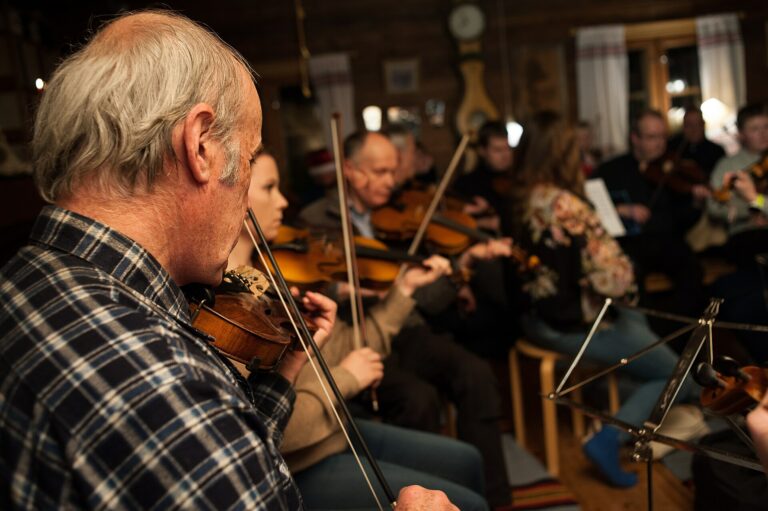
Kestävän kehityksen globaali toimintaohjelma
Maailman kaikkien maiden kestävän kehityksen työtä ohjaa vuonna 2015 YK:ssa sovittu kestävän kehityksen globaali toimintaohjelma, josta käytetään nimeä Agenda2030. Se sisältää 17 tavoitetta, jotka maiden tulisi yhdessä saavuttaa vuoteen 2030 mennessä.
Kestävän kehityksen tavoitteet
YK:n kestävän kehityksen tavoiteohjelma Agenda 2030 tähtää äärimmäisen köyhyyden poistamiseen sekä kestävään kehitykseen, jossa otetaan ympäristö, talous ja ihminen tasavertaisesti huomioon. Sivuston on tuottanut Suomen YK-liitto.
Tilastokeskus - Kestävän kehityksen indikaattorit
YK:n kestävän kehityksen toimintaohjelmassa on määritelty 17 globaalia tavoitetta, jotka ohjaavat kestävän kehityksen edistämistä. Näitä tavoitteita mitataan indikaattoreiden joukolla. Kukin maa on sitoutunut tuottamaan maansa tiedot näistä globaaleista indikaattoreista. Suomessa tästä työstä vastaa Tilastokeskus.
Unescon kulttuuripolitiikan ja kestävän kehityksen maailmankonferenssin loppujulistus.
Valtioneuvoston periaatepäätös kulttuuriperintöstrategiasta 2023–2030
Kulttuuriperintöstrategiassa tarkastellaan ensimmäisen kerran Suomessa kulttuuriperintöä kokonaisvaltaisesti: sitä on kaikkialla ja se on osa jokaisen elämää. Kulttuuriperintö voi olla aineellista, aineetonta tai digitaalista tai se voi liittyä kulttuuri- tai luonnonympäristöön. Strategian visiossa korostetaan kulttuuriperinnön merkitystä yhteiskunnan voimavarana, joka tarjoaa ratkaisuja kestävän tulevaisuuden rakentamiselle.
Luovien alojen ekologisen kestävyysmurroksen toimenpideohjelma viitoittaa tietä kestävän tulevaisuuden rakentamisessa. Toimenpideohjelmaan on koottu keskeiset huomiot luovien alojen kestävyyshankkeista, kestävyystyön haasteista sekä suosituksia jatkotoimenpiteiksi luovien alojen kestävyysmurroksen vauhdittamiseksi.
Hankkeen laaja esiselvitys kartoitti luovien alojen ekologista kestävyysmurrosta palvelevaa toimintaa ja menetelmiä Suomessa. Selvityksessä kartoitettiin käynnissä olevia hankkeita sekä selvitettiin, kuinka hiilineutraaliutta ja kiertotaloutta on luovilla aloilla huomioitu ja millaisia työkaluja, oppaita ja konsepteja on luotu.
Käsikirja vastuullisesti toimiville tapahtumille
Tämän käsikirjan toimintamalli pohjautuu tutkittuun ja käytännön tietoon sekä aiempaan vankkaan kokemukseen vastuullisesta tapahtumajärjestämisestä.
Kestävämmän musiikkialan työkalupakki
Kestävämmän musiikkialan työkalupakki (KEMUT) -verkoston tavoitteena on edesauttaa kestävää kehitystä elävän musiikin alalla tuottamalla konkreettisia, helppokäyttöisiä työkaluja kentän käyttöön.
Varsinais-Suomen museoiden ilmastolupaus
Hankkeessa 13 varsinaissuomalaista ammatillista museota kehittää toimintaansa ja tarkastelee omaa toimintaympäristöään kriittisesti ekologisen kestävyyden näkökulmasta.
Kestävä kasvatus – kulttuuria etsimässä
Kestävä kasvatus — kulttuuria etsimässä -julkaisu on syntynyt Suomen Kulttuuriperintökasvatuksen seuran Kulttuurisesti kestävä kehitys -hankkeen tuloksena. Hankkeessa lähestyttiin kulttuurisen kestävyyden teemaa kasvatuksen näkökulmasta. Julkaisun tarkoituksena on toimia konkreettisena apuna kasvattajille, jotka pohtivat kuinka edistää kulttuurisesti kestävää kehitystä arkityössään.
Kestävä kehitys lastenkulttuuritoiminnassa
Lastenkulttuurin kestävän kehityksen opas on maksuton ja tarkoitettu kaikkien lastenkulttuurin toimijoiden, opettajien, taidekasvattajien sekä nuorisotyöntekijöiden käyttöön. Oppaan on tuottanut Suomen lastenkulttuurikeskusten liitto.
Suomen Kotiseutuliitto – kestävä kotiseututyö
Sivustolle on koottu yleistietoa, suunnitelma sekä käsikirjoja kestävän kotiseututyön tueksi.
Suomen Museoliitto – Kestävän kehityksen työryhmä
Suomen Museoliiton kestävän kehityksen työryhmä on kuullut asiantuntijoita, selvittänyt museotoiminnan kestävän kehityksen hankkeita ulkomailla sekä toteuttanut kartoituksen kestävän kehityksen toimintamalleista ja parhaista käytännöistä suomalaisissa museoissa.
MAPPAsta löydät tuhansia materiaaleja, menetelmiä, tapahtumia ja palveluita kootusti eri toimijoilta. Rekisteröitymällä palveluun voit tähdittää omat suosikkimateriaalisi, koota teemareppuja, suunnitella monialaisia oppimiskokonaisuuksia tai lisätä omia sisältöjäsi yhteiskäyttöön.
TINFO - Teatterin vihreän kirjan avulla kohti ekologisesti kestävämpää toimintaa
The Theatre Green Book on laadittu kestävämmän teatteritoiminnan ohjeistukseksi, jonka koostamiseen ovat osallistuneet useat brittiläiset esittävän taiteen alan toimijat yhteistyössä kestävän kehityksen asiantuntijoiden kanssa. Theatre Green Book on kolmiosainen opas ja malli, missä annetaan ohjeita tuotantojen tekemiseen kestävämmällä tavalla sekä teatterirakennusten ja muiden teatterin toimintojen kestävyyden parantamiseen.
Tietoa ilmastonmuutoksesta toimialoille, työkaluja, infografiikkaa ja alueellista tietoa.
Canemure-hanke - työkaluja ja palveluita
Canemure-hankkeen asiantuntijaverkosto tuottaa kunnille, valtionhallinnolle ja kansalaisille erilaisia työkaluja ja palveluita sekä jakaa tietoa eri teemoista ilmastonmuutoksen hillitsemiseksi.
Blogkirjoitus: "Greenhouse gas -protokolla auttaa organisaatioita merkittävimpien päästölähteiden tunnistamisessa - WWF Green Officen työkaluilla lasket ja seuraat päästöjä."
Kiertotalous-Suomi on osaamisen ja tiedon solmukohta, joka yhdistää ratkaisuja etsivät toimijat ja niiden tarjoajat. Verkosto tukee eri toimijoita oman kiertotalouspolun löytämisessä.
FIBS - Monimuotoisuusarviointi
Itsearviointityökalulla yritys ja organisaatio voi hyödyntää työkalua oman lähtötilanteensa ja resurssiensa mukaisesti. Arvioinnissa voi edetä omaan tahtiin ja valita työkalun toimenpiteistä ne, jotka ovat ensialkuun toteutettavissa sekä laatia kehittämistavoitteet omalle organisaatiollenne olennaisten toimenpiteiden osalta.
Museovirasto - Kestävän kehityksen toimintaohjelma 2025
Museoviraston ensimmäiseen kestävän kehityksen toimintaohjelmaan on nostettu YK:n Agenda 2030 -tavoitteista Museoviraston toiminnan kannalta keskeisimmät tavoitteet ja teot, joita virasto työssään keskittyy edistämään.
Elossa - luonto ja elävä kulttuuriperintö
Tämän verkkojulkaisun tavoitteena on lisätä näkyvyyttä, herättää keskustelua ja vahvistaa elävän perinnön näkökulmaa erityisesti luontoon ja ympäristöön liittyen. Julkaisu on syntynyt osana aineettoman kulttuuriperinnön suojelemisesta tehdyn Unescon yleissopimuksen (2003) toimeenpanotyötä. Alan asiantuntijat valottavat julkaisussa luontoon liittyvää elävää aineetonta kulttuuriperintöä monelta eri näkökannalta.
Itsetekemisen perinne - Käsityöt elävänä kulttuuriperintönä
Tämän verkkojulkaisun tarkoituksena on avata keskustelua elävästä aineettomasta kulttuuriperinnöstä erityisesti käsityöammattilaisten ja -harrastajien parissa. Julkaisu on syntynyt osana aineettoman kulttuuriperinnön suojelemisesta tehdyn Unescon yleissopimuksen (2003) toimeenpanotyötä.
Yhteinen polku - Opas elävän perinnön vastuulliseen matkailulliseen tuottamiseen
Tämä opas on syntynyt Visit Finlandin ja Museoviraston yhteistyönä, ja sen kehittämiseen on osallistunut joukko elävän perinnön ja matkailun asiantuntijoita. Oppaan tarkoituksena on tukea elävän perinnön vastuullista käyttöä matkailussa. Opas on tarkoitettu sekä elävän perinnön parissa toimiville tahoille että matkailuyrittäjille.
Museoviraston tuottama rakennusperinnön, säilyttävän korjaamisen ja restauroinnin sivusto.
Kestävä kehitys osana kulttuuriympäristöpolitiikkaa: kansainvälisiä linjauksia
Tämä selvitys on osa Museoviraston Kestävyys ja kulttuuriympäristötyö -hanketta, jossa panostetaan kestävää ja kehitystä ja kulttuuriympäristöä koskevaan tietoon ja osaamiseen. Selvitys kartoittaa kestävän kehityksen ja kulttuuriympäristöt yhdistäviä kansainvälisiä kulttuuriperintösopimuksia ja politiikkalinjauksia ja pyrkii niiden kautta tuomaan esiin mahdollisuuksia, joihin kulttuuriympäristötoimijat voivat tarttua myös Suomessa.
